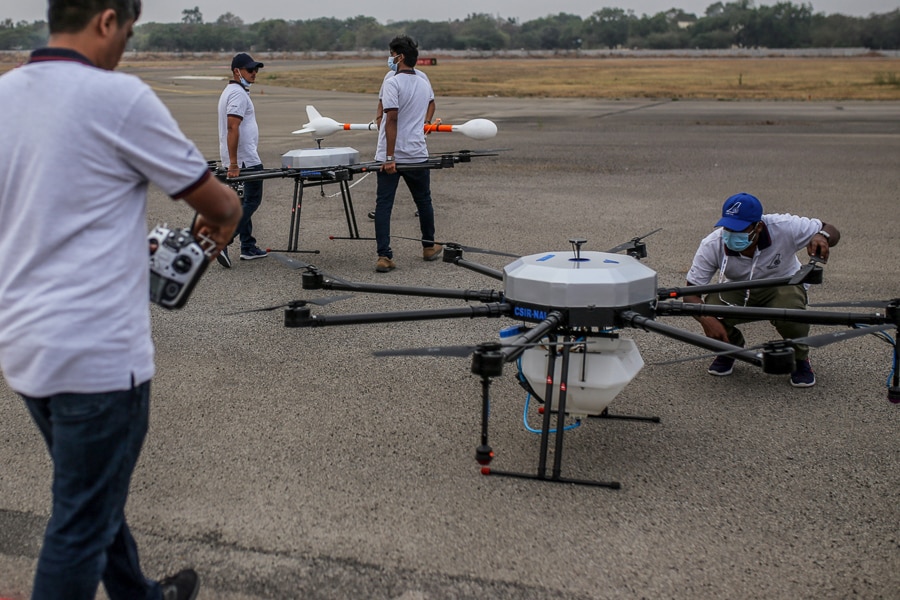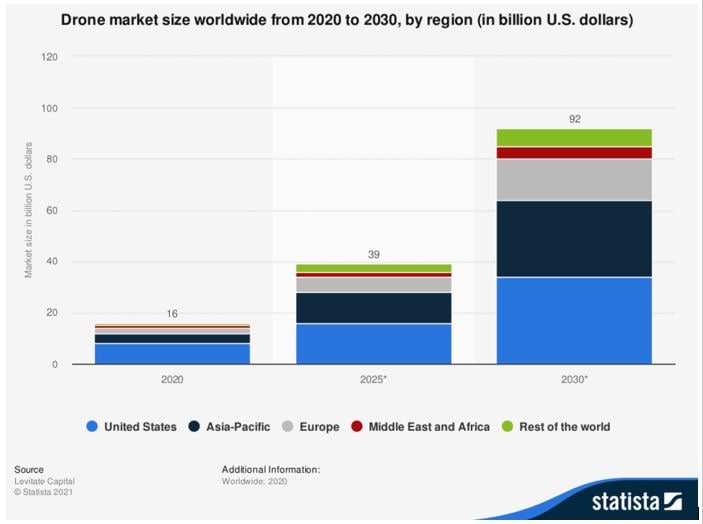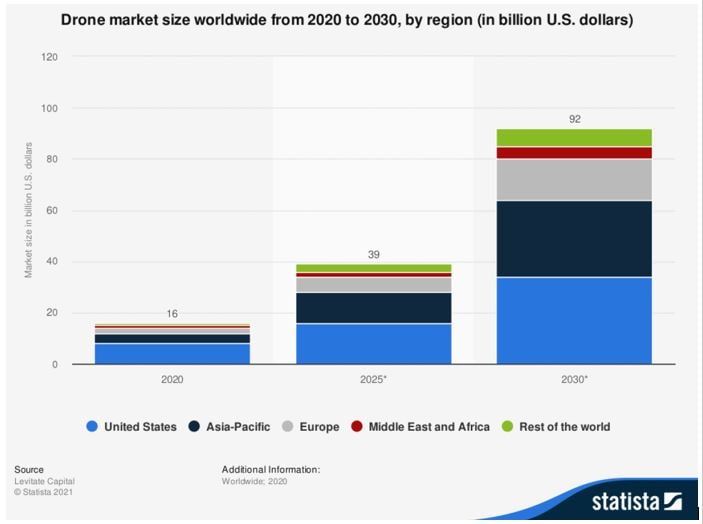
5 hurdles India needs to overcome to become a global drone hub by 2030
IIM-Bangalore identifies some of the potential roadblocks and suggests initiatives that can help the government and the industry to achieve the vision
 Workers test a CSIR-NAL octocopter drone at the Wings India 2022 Air Show held at Begumpet Airport in Hyderabad, India, on Thursday, March 24, 2022.
Image: Dhiraj Singh/Bloomberg via Getty Images
Workers test a CSIR-NAL octocopter drone at the Wings India 2022 Air Show held at Begumpet Airport in Hyderabad, India, on Thursday, March 24, 2022.
Image: Dhiraj Singh/Bloomberg via Getty Images
India aims to become the global drone hub by 2030. Prime Minister Narendra Modi and Union Minister of Civil Aviation Jyotiraditya Scindia have made remarks on this vision on various occasions. The worldwide drone market size is projected to grow exponentially in the coming years (See Figure 1). The government of India expects the annual sales turnover of the Indian drone manufacturing sector to cross Rs 900 crores and the drone services sector to cross Rs 30,000 crores in the next three years. The market development is expected to generate more than 5 lakh jobs. We highlight some of the potential roadblocks and suggest initiatives that can help the government and the industry to achieve the vision.
The government, with social welfare as a priority, urges the industry to primarily focus on applications in the field of agriculture, military, and healthcare. Spraying of nano urea, transport of Covid-19 vaccines, rural surveying, and so on are some recent drone operations which followed and demonstrated this vision of the Indian government.
Journey so far
1. Drone Rules 2021
A new liberalised set of rules on drones was released as 'Drone Rules 2021' in August 2021 after incorporating suggestions from different stakeholders. The major highlights of the rules include: reducing the number of forms required to be filled to operate drones from 25 to 5, reducing the types of fees collected from the operator from 72 to 4, slashing the rates of fees, and so on. In short, the government has made the official procedures a lot simpler; thereby reducing the time spend on paper works for registration and operations.2. DigitalSky website
An airspace map has been published by the government on the ‘DigitalSky’ website. The map zones the Indian airspace into green, yellow, and red categories. Green zones, covering the majority of the geographical area, are free-to-fly zones. This eliminates the requirement to get operational approval from local authorities before drone operations. The DigitalSky website also acts as a single-window portal for filling all five forms under Drone Rules 2021 for respective approvals.[This article has been published with permission from IIM Bangalore. www.iimb.ac.in Views expressed are personal.]









